Fitzgerald River
National Park
A botanical wonderland renowned for its rugged and spectacular scenery. The Fitzgerald River National Park is one of the larger national parks in Western Australia. It has 330,000 hectares of unspoiled wilderness located on one of the most magnificent stretches of Australian coast. Access to the park is available via Hopetoun on the Hamersley Drive which is a sealed road from Hopetoun right through to the Hamersley Inlet.
The park is one of the most flora and fauna rich conservation areas in Western Australia, recognized globally for the natural diversity. Approximately 20% of the state’s described plant species, 22 mammal species, 41 reptile species, and more than 200 bird species, including rare species such as the ground parrot, western whip bird and the western bristle bird; more species of animals live in this park than any other reserve in South Western Australia, a nature enthusiasts play ground!
Parks and Wildlife WA have a number of downloadable publications that cover the various walk and drive trails within the Fitzgerald River National Park and you can access them here by clicking on this link.
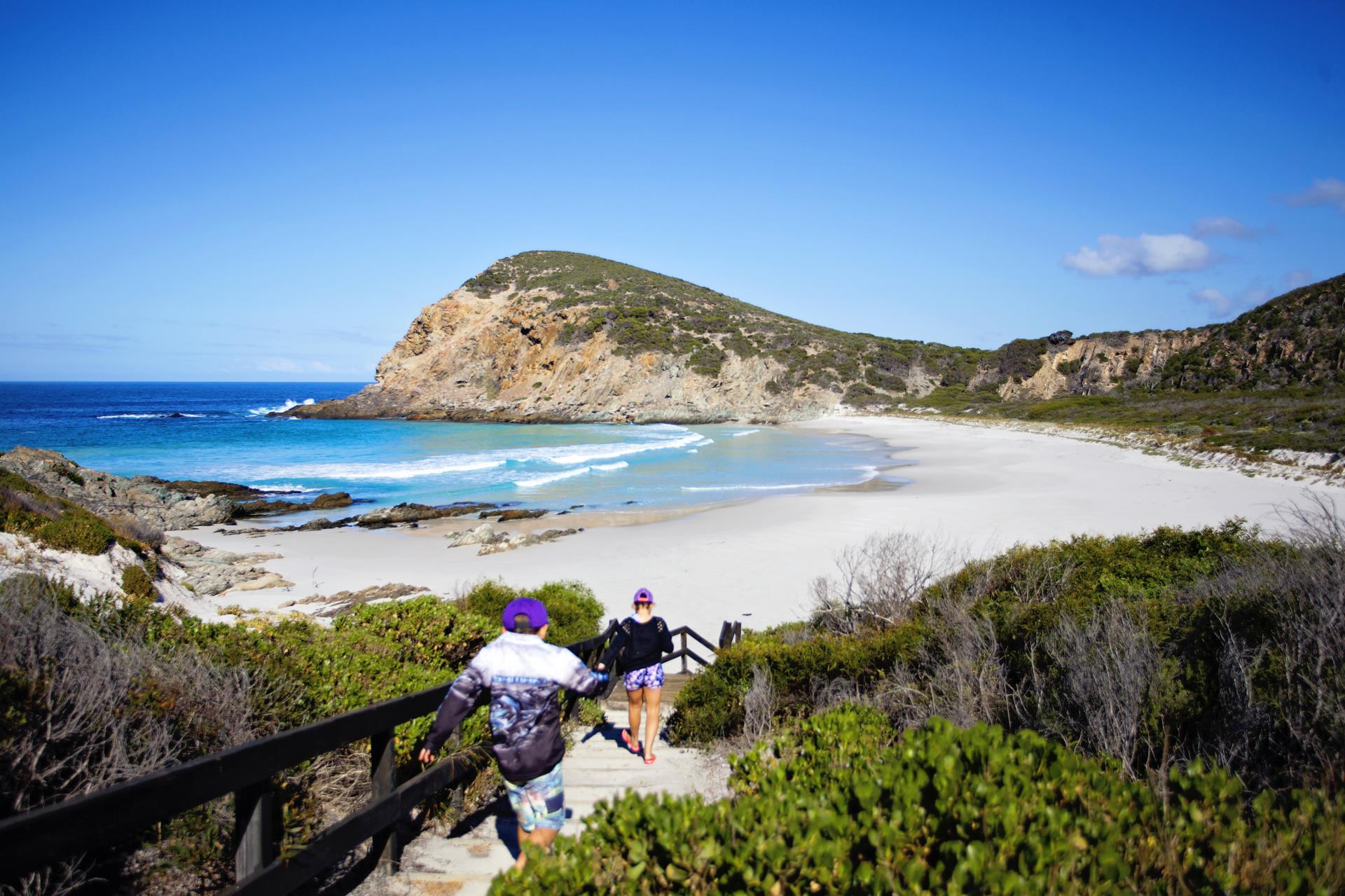
In June 2017 the park retained international significance as UNESCO (United Nations Educational, Scientific and Cultural Organisation) approved the park as a Biosphere Reserve. This global recognition ensures the reserve will be managed and taken care of in a sustainable manner, in collaboration with the community.
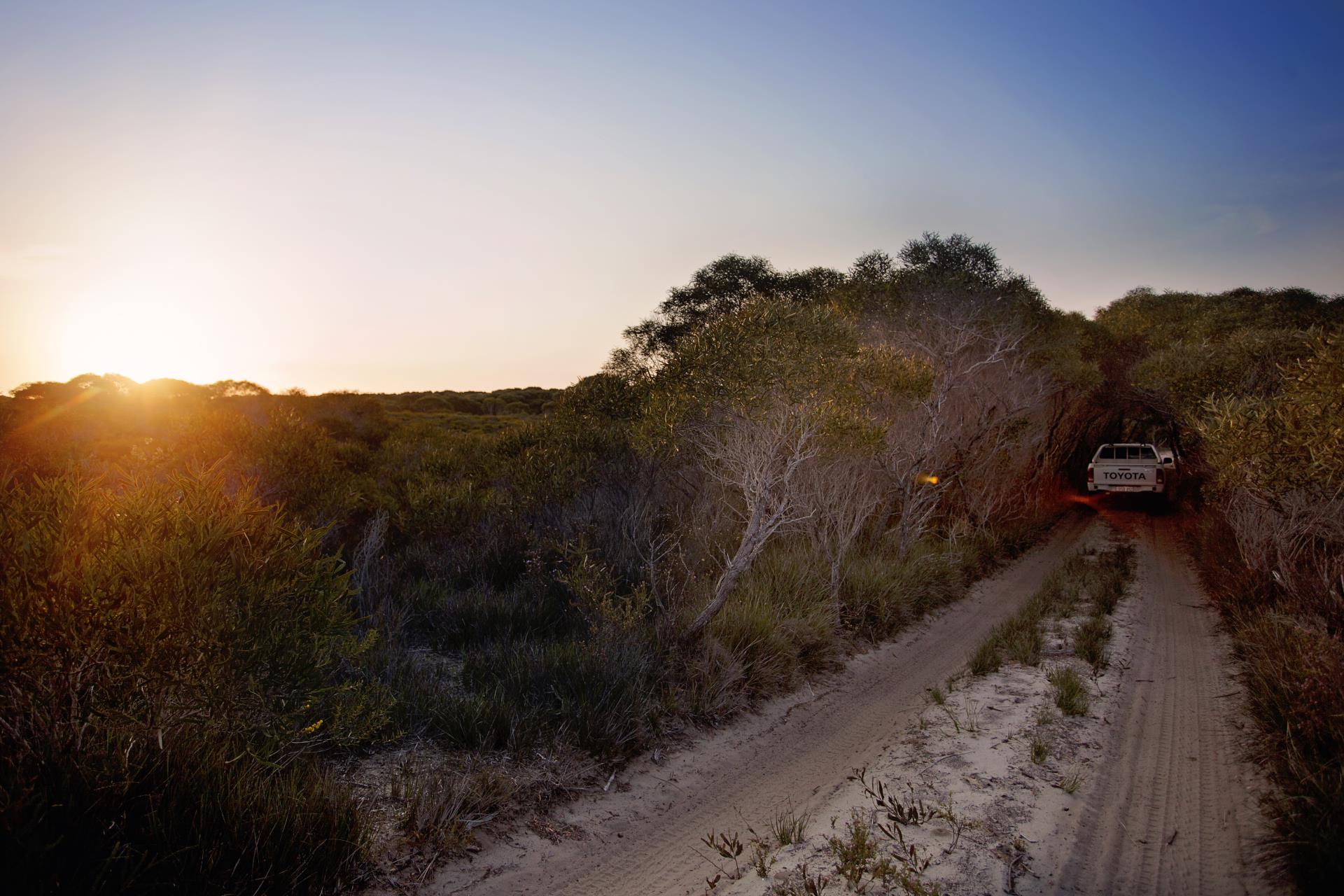
Much of the rugged scenery and pristine coastline is accessible via 2WD, due to the 40 million dollar upgrade completed in June 2014. New facilities include picnic areas, viewing platforms and walk trails to Barrens Beach, Barrens Lookout, Four Mile Beach, East Hamersley Inlet and Cave Point. The central wilderness area is only accessible on foot.
“The Cave Point viewing platform is a must to experience and offers a fantastic vantage point for whale watching!"
All unsealed roads and 4WD tracks can be closed at short notice in wet weather conditions to prevent the risk of dieback. To find out the status of the roads view the latest road condition report for the park, which can be found here . Alternatively, like and follow the Fitzgerald Biosphere Coast Facebook page, Shire of Ravensthorpe Facebook page or contact the National Park Ranger on (08) 9838 3060. Information is also available on Parks and Wildlife Services website under notifications: Click Here.
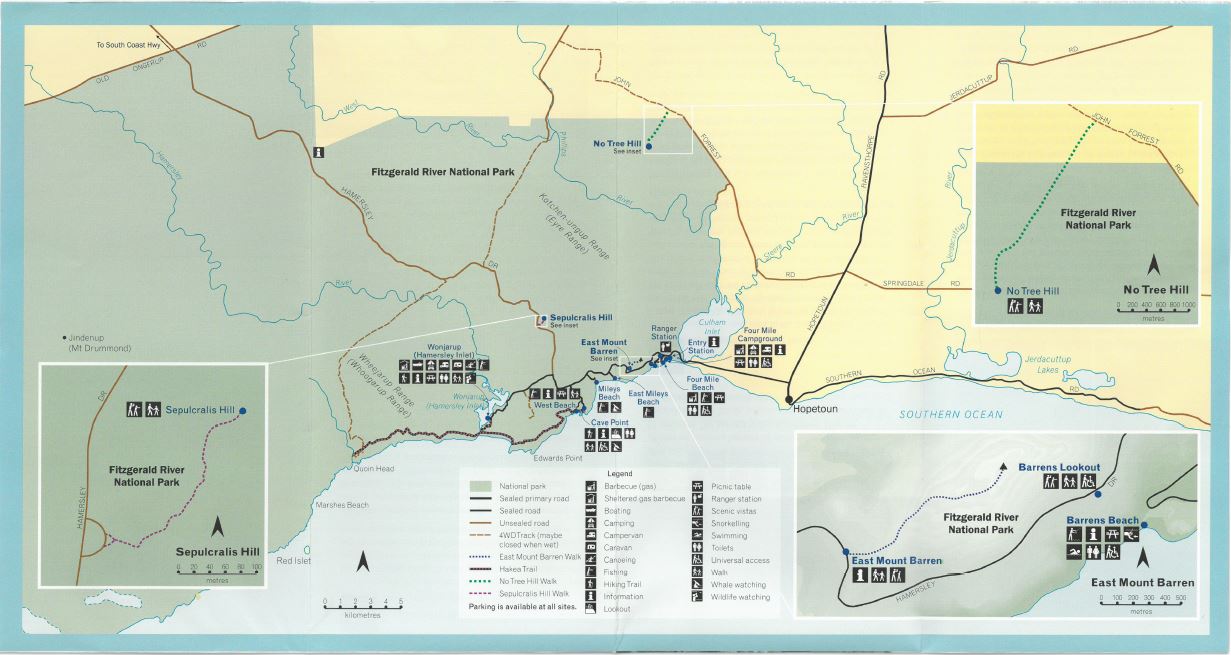
Click for larger image: FRNP - Short Walks Map (East)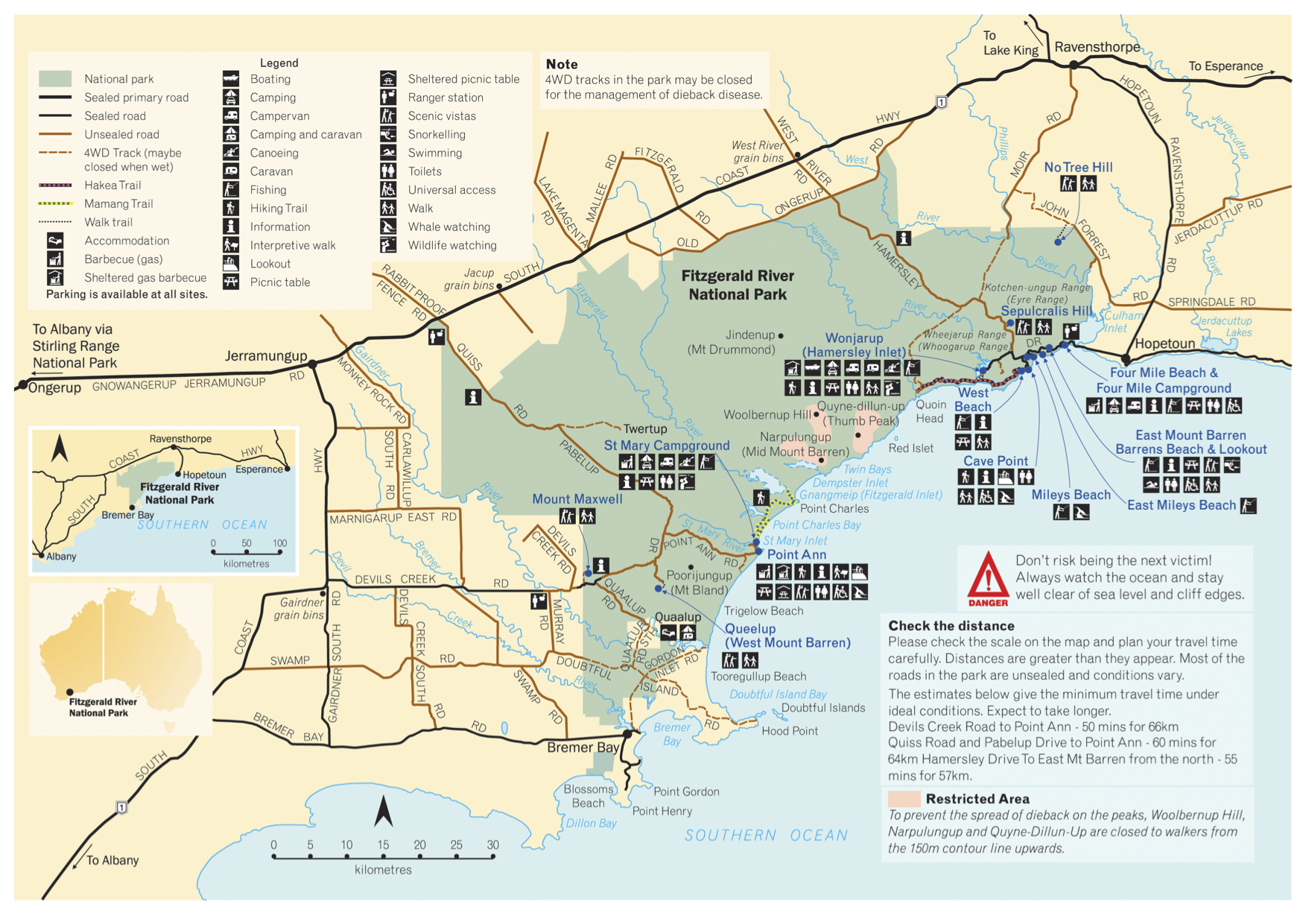
Click for larger image: FRNP Map
IMPORTANT DIEBACK INFORMATION
Dieback is caused by a pathogen, known as Phytophthora cinnamomi, which is lethal to hundreds of plant species. This disease kills plants by destroying their root systems, and threatens many of the park’s plant species. The climate of the south coast favours the spread of dieback, which thrives in warm, moist soil and can easily be spread in mud or soil that adheres to vehicle tyres or bush walkers’ footwear. It is therefore sometimes necessary to close roads and tracks.
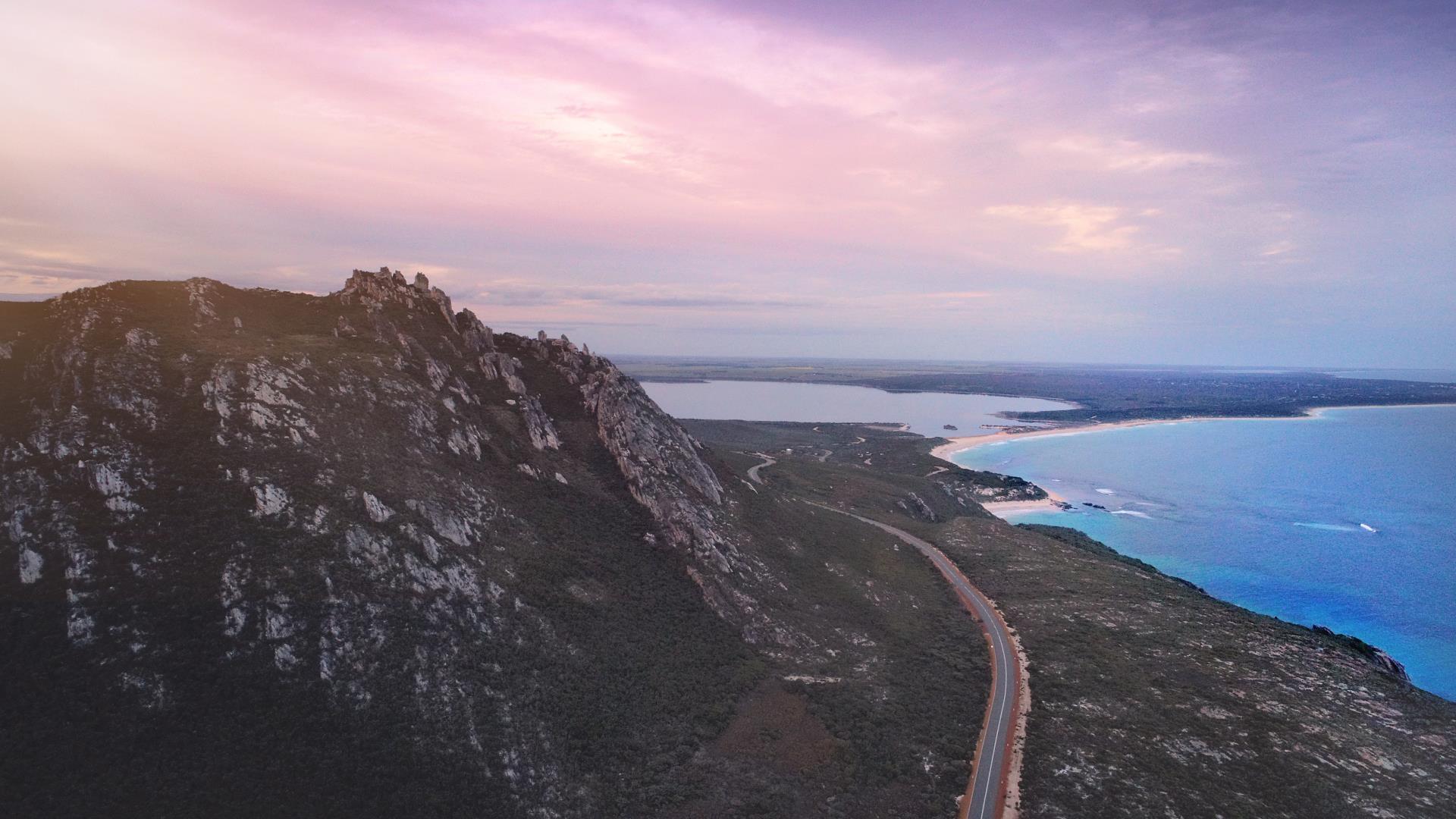
Fitzgerald River National Park is the largest single national park in the south-west of Western Australia and the park's iconic status and natural assets through its international recognition as the core of UNESCO listed Fitzgerald Biosphere with your help has a chance of keeping dieback out of this biodiverse wilderness.
Bush walkers can help by cleaning mud and soil from their boots before entering a park or reserve, or at the boot-cleaning stations provided at trailhead sites in the park. When driving in the park, it is essential to keep to established roads and tracks and obey all ‘ROAD CLOSED’ signs. By washing the tyres and under-body of your car before and after a trip to a park or reserve, you can help preserve WA’s natural areas. A 24-hour car and truck wash is available in Hopetoun just near the roundabout as you enter the town..